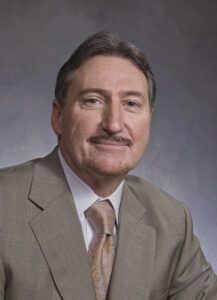 |
| Patrick J Ducharme |
It is not the rule that offends one’s senses; it is the application of the rule. Judges routinely claim to be able to hear prejudicial evidence in the course of making a legal ruling on evidence, then banish from their minds the prejudicial aspects of that evidence if a ruling is made in favour of the accused thus excluding the evidence. Of this claim I am depressingly suspicious. My suspicion soars, however, at the thought of jurors attempting to accomplish this same segregation of thought.
More likely to occur unfortunately is that jurors will find guilt not by evidence but by association. In nature, birds of a single species do, in fact, sometimes fly together. In law, guilt by association is presumptively improper.
Jurors will, of course, be instructed that probable guilt is not a sufficient basis to convict. They will be instructed that they have been allowed to hear all the evidence concerning the conduct and declarations of others, most, or all of whom, did not actually testify. And, they have been allowed to hear about events that occurred in the absence of the accused, and perhaps without any awareness by him of the events. But, they must forget that evidence presently. They will only consider that evidence later in their deliberations, if at all.
Before they even consider that evidence they first decide whether the accused is probably a member of the conspiracy that is alleged. And, they must do so based solely on evidence directly against the accused. In other words, they must set aside (banish, disregard, ignore) for the moment all the evidence that they have heard that is not directly admissible against the accused. Here, the trial Judge will try to help them separate in their minds what evidence is usable and what evidence needs to be ignored. But by merely reciting the evidence that the jury must ignore, the Judge, in fact, accomplishes the opposite effect. The Judge succeeds only in highlighting that evidence in the jurors’ minds. If they conclude the accused is a probable member of the conspiracy, then they may consider the rest of the evidence they have heard to determine his guilt.
Does any reasonable person believe that this instruction cures the prejudice? Canada is a country with an unenviable record for wrongful murder convictions. Common sense suggests that the present paradigm for dealing with co-conspirators’ evidence may play a significant role in future wrongful convictions. In this instance the words of McLachlin J. in Rockey1 come to mind, that juries cannot be expected to determine on their own the proper and improper uses of evidence. McLachlin J. wrote:
It has long been accepted that trial Judges charging juries on out-of-court statements must instruct them on how they may use the statements– whether as evidence of the truth of their contents or for some other purpose, such as credit. In this case the trial Judge did not do this. It may be that it was apparent to everyone in the courtroom that the subsequent statements were tendered on the issue of consistency, as the majority of the Court of Appeal suggests. Nevertheless, the usual rule requires this to be stated expressly.
With or without instructions on how to use out-of-court statements, we expect much of our jurors when we ask them to ignore prejudicial, out-of-court statements and conduct, until after they first conclude whether the accused is a probable member of a conspiracy. This instruction is akin to asking a curious motorist after he or she has witnessed a horrific accident to look away from the accident in the interest of orderly traffic flow. The instruction instead likely only piques the jury’s interest in the very evidence that they are asked to ignore.

The above is the an excerpt of Patrick J Ducharme's book, Canadian Criminal Procedure Volume 2, available at Amazon or in bulk through MedicaLegal Publishing along with Criminal Trial Strategies.
Subscribe to Patrick Ducharme's Youtube Channel
